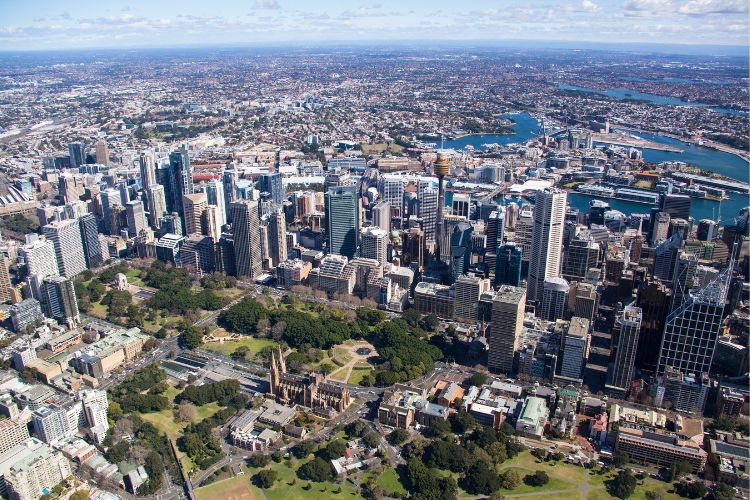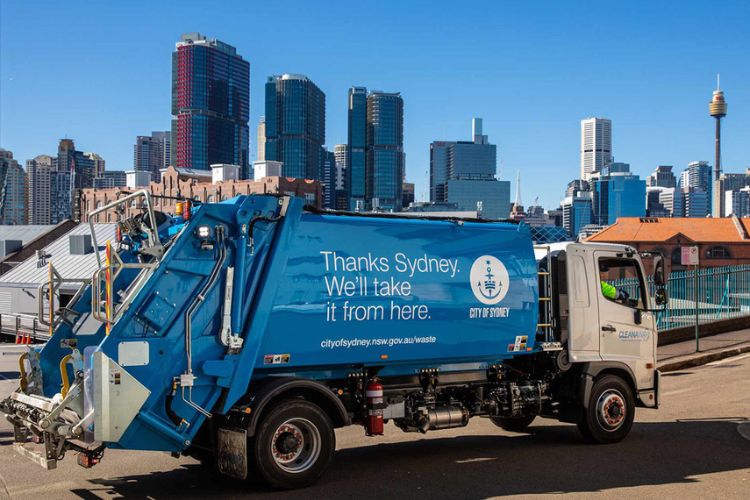For Sydney residents and business owners, recycling and waste management are a big issue. We’re asking questions about how we can come together to stall further damage to our environment and save overstretched resources from further depletion.
We’ve put together this article as a way to share our findings on the current situation with regard to recycling in Sydney. How effective are current efforts and what does the future hold?

How much waste is produced in Sydney each year?
Sydney produces over 3.5 million tonnes of waste every year. The NSW Waste and Resource Recovery Report deduced that more than 50% of NSW’s waste came from Sydney alone.
How much of this waste is recycled?
Over 40% of Sydney’s waste is recycled, and more than half is sent to landfill. This isn’t positive. Although landfills aren’t as toxic to the environment as they were in the past, thanks to new technologies and processes, they’re still far from ideal in terms of protecting our wildlife and water sources.
What are the most common items that are recycled?
The most commonly recycled material, above all others, is metal. This is because metal holds its value, and people are happy to recycle it as they receive payment when they do. Aluminium cans are particularly well recycled as they are 100% recyclable.
Following metal, the most commonly recycled materials are Polyethylene Terephthalate (PET), plastic bottles, newspapers and cardboard.
What are the most common items that are sent to landfill?
The most common items sent to landfills in Australia include food, building materials, plastic, and textiles.
There is a lot of food waste in Australia, with much of it coming from homes, manufacturers, and farming.
How much waste is produced per person in Sydney each year?
Sydney is highly urbanised, which means that there are more people, more shops and more waste. The amount varies on a number of factors, but it’s thought that, on average, individuals in Sydney each produce around 1.1 tonnes of waste per year.
Some people will produce much less and others much more – but when the numbers are averaged, the figures related to Sydney waste are still quite worrying.
How does this compare to other Australian cities?
Sydney produces more waste than other cities due to its size. In addition, the proliferation of retail outlets, including fast food outlets in Sydney, when compared to other cities, means there is simply more opportunity for consumers to buy goods and consumables.
What initiatives are in place to increase recycling rates?
Sydney is making efforts to educate residents on options for recycling. The Waste Strategy and Action Plan 2017-2030 is an ambitious plan to reduce waste in the city over the coming decade drastically.
The plan has six priorities to ensure Sydney becomes a world leader in environmental change:
- Promote innovation to avoid waste
- To improve recycling outcomes
- Sustainable design
- Clean and clear streets
- Better data management
- Future treatment solutions
It is hoped that by June of 2030, significant changes will be made, including the diversion of 90% of Sydney waste from City parks, streets and public places from landfills, 90% of waste from City-managed properties from landfills and 90% of waste from construction and demolition managed by City operations from landfill.’

Image credit: www.insite.ipwea.org
What are the challenges associated with waste management in Sydney?
The challenges are numerous, but the most pressing include the sheer amount of waste generated by building and construction and the waste produced by individual households each year.
Providing residents with practical solutions to disposing of recyclable goods is sometimes difficult, as costs can be high.
Associated Costs
Costs associated with waste management are usually due to:
- Collection
- Transport
- Processing
- Storage
These activities are particularly expensive because they incur fuel, space and staff costs.
The costs should be minimal for individual households because council collections are regular and reliable.
Sometimes, it might be necessary for residents to pay for additional support, such as skip bin hire, which is an eco-friendly and convenient alternative to dumps. Council permits for Sydney residents are another potential cost, though most homeowners won’t need to pay for this.
The Best Skip Bin Companies in Sydney offer a reliable, affordable support system for homeowners and businesses in the area.
Environmental Impacts
This must be reduced as soon as possible because such a high amount of Sydney’s waste currently ends up in landfills.
Landfill impacts water, air and land quality. The gas produced by landfills (mainly methane) is due to the decomposition of organic waste, contributing to global warming.
Water that moves from or across landfills forms a substance called leachate, which can contaminate surface and groundwater. This is bad not only for the wildlife but also for the people living nearby.
Final thoughts and key takeaway.
Because Sydney is a major city and the most populous in Australia, it must become a leader and an example to other cities in terms of innovation in waste management.
The city’s leaders must take responsibility for making these changes and ensuring that the very latest in waste management techniques are employed.
Residents can also make changes – utilising the city’s free recycling opportunities, using less, recycling or re-using more.
Making sure to separate recyclable waste from general and green waste is at the heart of what individual residents must do to aid the changes that need to be made.
The best and most environmentally friendly methods should be employed when disposing of household waste, which is too much for council collection.
Skip bin hire is a particularly sensible option because the waste collected in skips is sorted and separated so that anything recyclable is removed and processed accordingly.
